- Clone
- SA191A10 (See other available formats)
- Regulatory Status
- RUO
- Other Names
- Slc7a1, MLV, ERR, Ecotropic Retroviral Receptor, Cat1, hCat-1
- Isotype
- Rat IgG2a, κ
- Ave. Rating
- Submit a Review
- Product Citations
- publications
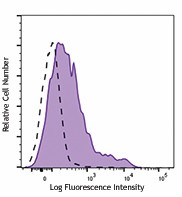
-

PMA/Ionomycin stimulated C57BL/6 mouse splenocytes were stained with Slc7a1 (clone SA191A10) PE (filled histogram) or rat IgG2a, κ PE isotype control (open histogram).
| Cat # | Size | Price | Quantity Check Availability | Save | ||
|---|---|---|---|---|---|---|
| 150503 | 25 µg | $159 | ||||
| 150504 | 100 µg | $372 | ||||
Slc7a1, also known as Cat-1, is a 63 kD receptor that is associated with the transport of cationic amino acids. Slc7a1 is targeted for gene transduction in mouse cells using retroviral vectors. Slc7a1 is found in most cell types, but is not expressed in hepatic cells.
Product DetailsProduct Details
- Verified Reactivity
- Mouse
- Antibody Type
- Monoclonal
- Host Species
- Rat
- Immunogen
- Mouse mCat-1 transfectants.
- Formulation
- Phosphate-buffered solution, pH 7.2, containing 0.09% sodium azide.
- Preparation
- The antibody was purified by affinity chromatography and conjugated with PE under optimal conditions.
- Concentration
- 0.2 mg/ml
- Storage & Handling
- The antibody solution should be stored undiluted between 2°C and 8°C, and protected from prolonged exposure to light. Do not freeze.
- Application
-
FC - Quality tested
- Recommended Usage
-
Each lot of this antibody is quality control tested by immunofluorescent staining with flow cytometric analysis. For flow cytometric staining, the suggested use of this reagent is ≤1.0 µg per million cells in 100 µl volume. It is recommended that the reagent be titrated for optimal performance for each application.
- Excitation Laser
-
Blue Laser (488 nm)
Green Laser (532 nm)/Yellow-Green Laser (561 nm)
- Product Citations
-
- RRID
-
AB_2566324 (BioLegend Cat. No. 150503)
AB_2566324 (BioLegend Cat. No. 150504)
Antigen Details
- Structure
- 63 kD.
- Distribution
- T-cells, endothelial cells, glial cells, and is not expressed in hepatic cells.
- Function
- Transport of cationic amino acids.
- Ligand/Receptor
- Ecotropic murine leukemia virus, cationic amino acids.
- Cell Type
- T cells, Endothelial cells
- Biology Area
- Immunology
- Antigen References
-
1. Wang X, et al. 2014. Biol. Reprod. 91:59.
2. Vina-Vilaseca A, et al. 2011. J. Biol. Chem. 10:8697.
3. Albritton LM, et al. 1989. Cell 57:659.
4. Kim JW, et al. 1991. Nature 352:725. - Gene ID
- 11987 View all products for this Gene ID
- UniProt
- View information about Slc7a1 on UniProt.org
Related Pages & Pathways
Pages
Related FAQs
- What type of PE do you use in your conjugates?
- We use R-PE in our conjugates.
Other Formats
View All Slc7a1 (Cat-1, ERR) Reagents Request Custom Conjugation| Description | Clone | Applications |
|---|---|---|
| Purified anti-mouse Slc7a1 (Cat-1, ERR) | SA191A10 | FC |
| PE anti-mouse Slc7a1 (Cat-1, ERR) | SA191A10 | FC |
| APC anti-mouse Slc7a1 (Cat-1, ERR) | SA191A10 | FC |
| TotalSeq™-A0889 anti-mouse Slc7a1 (Cat-1, ERR) | SA191A10 | PG |
Customers Also Purchased
Compare Data Across All Formats
This data display is provided for general comparisons between formats.
Your actual data may vary due to variations in samples, target cells, instruments and their settings, staining conditions, and other factors.
If you need assistance with selecting the best format contact our expert technical support team.
-
Purified anti-mouse Slc7a1 (Cat-1, ERR)
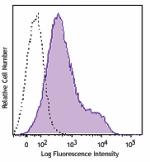
C57BL/6 mouse splenocytes were stained with Slc7a1 (clone SA... -
PE anti-mouse Slc7a1 (Cat-1, ERR)
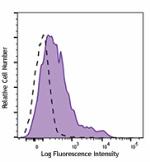
PMA/Ionomycin stimulated C57BL/6 mouse splenocytes were stai... -
APC anti-mouse Slc7a1 (Cat-1, ERR)
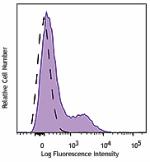
PMA/ionomycin stimulated C57BL/6 mouse splenocytes were stai... -
TotalSeq™-A0889 anti-mouse Slc7a1 (Cat-1, ERR)

 Login/Register
Login/Register 









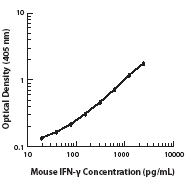
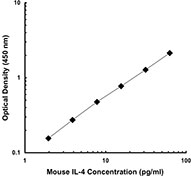

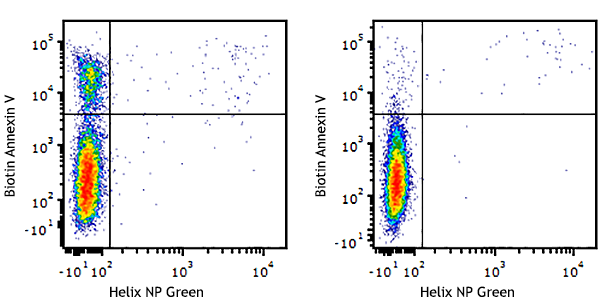



Follow Us